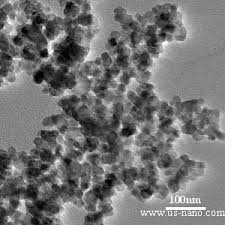
Antimony Tin Oxide Nanoparticles: Properties, Applications, and Future Potential
Antimony tin oxide (ATO) nanoparticles are gaining recognition as versatile and advanced materials with applications in various industries. Known for their unique electrical conductivity, transparency, and thermal stability, these nanoparticles are a key component in technologies that demand efficiency and performance. This article explores the properties, applications, and future prospects of ATO nanoparticles.
What Are Antimony Tin Oxide Nanoparticles?
ATO nanoparticles are composed of tin oxide (SnO2) doped with antimony (Sb). This doping process introduces free electrons, enhancing the electrical conductivity of the material. The resulting nanoparticles are typically used in powder or colloidal forms and exhibit excellent optical and electrical properties.
Properties of ATO Nanoparticles
- Electrical Conductivity:
- Exhibits high electrical conductivity due to the introduction of free electrons via antimony doping.
- Optical Transparency:
- Transparent to visible light, making them ideal for optical applications.
- Thermal Stability:
- Retains structural integrity and functionality under high-temperature conditions.
- Chemical Resistance:
- Resistant to oxidation and chemical degradation, ensuring durability in harsh environments.
- Nano-Sized Dimensions:
- High surface area and reactivity, enabling enhanced performance in various applications.
Applications of ATO Nanoparticles
- Transparent Conductive Coatings (TCCs):
- Used in touchscreens, solar panels, and flat-panel displays due to their conductive and transparent properties.
- Energy Storage:
- Incorporated into lithium-ion batteries to improve conductivity and efficiency.
- Heat-Resistant Films:
- Applied in automotive and architectural glass coatings to provide thermal insulation and UV protection.
- Antistatic Coatings:
- Used in electronics and packaging materials to prevent static charge buildup.
- Catalysis:
- Acts as a catalyst or catalyst support in chemical reactions, particularly in environmental and energy-related processes.
- Sensors:
- Integrated into gas sensors for detecting pollutants and industrial gases.
- Electromagnetic Shielding:
- Provides shielding in sensitive electronic equipment to protect against electromagnetic interference (EMI).
Advantages of ATO Nanoparticles
- Versatility:
- Applicable in diverse industries, including electronics, energy, and construction.
- Sustainability:
- Contributes to eco-friendly technologies, such as energy-efficient coatings and renewable energy systems.
- High Performance:
- Enhances the functionality and efficiency of the systems it is integrated into.
- Durability:
- Withstands extreme conditions, ensuring long-term performance.
Challenges in Using ATO Nanoparticles
- Cost of Production:
- High production costs can limit adoption in cost-sensitive industries.
- Dispersion Issues:
- Achieving uniform dispersion in coatings and composites can be challenging.
- Scalability:
- Scaling up production for industrial applications while maintaining quality is complex.
- Health and Safety:
- Ensuring safe handling and minimizing environmental impact during production and application.
Future Directions
- Advanced Manufacturing Techniques:
- Research into cost-effective and scalable production methods to reduce costs.
- Hybrid Nanomaterials:
- Combining ATO nanoparticles with other materials to create multifunctional composites.
- Energy Innovations:
- Expanding use in next-generation energy storage systems and renewable energy applications.
- Smart Coatings:
- Development of coatings with responsive properties, such as self-healing or adaptive conductivity.
- Environmental Applications:
- Utilizing ATO nanoparticles in water purification and air pollution control systems.
Conclusion
Antimony tin oxide nanoparticles are a transformative material with wide-ranging applications in modern technology. Their unique combination of conductivity, transparency, and durability makes them indispensable in industries such as electronics, energy, and construction. As research continues to address current challenges, the potential for ATO nanoparticles to drive innovation and support sustainable practices will only grow, solidifying their role as a cornerstone of advanced material science.
